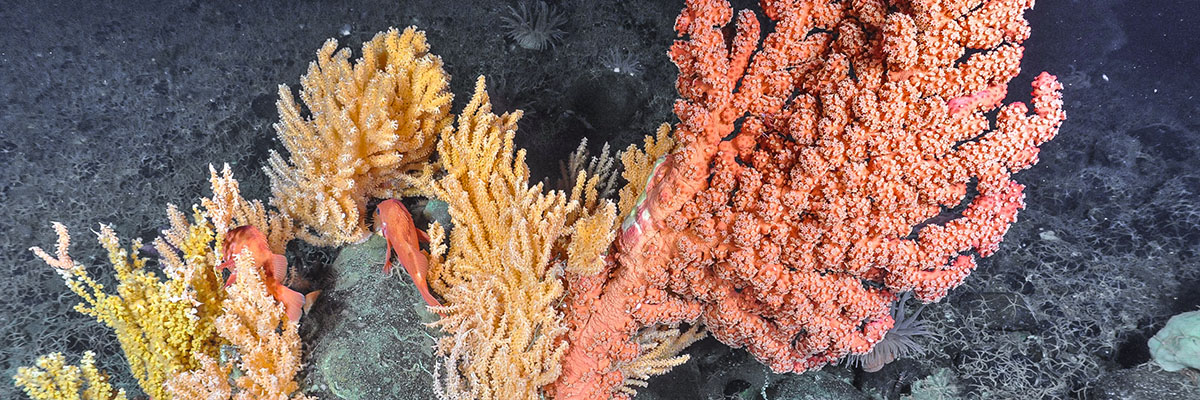ROPOS helps protect sensitive benthic areas
ROPOS Cruise leads to protection of 9000 square km² of vulnerable cold water coral habitat
In June 2014, CSSF was part of a collaborative research cruise between Dalhousie University, NOAA, and Fisheries and Oceans Canada (DFO), to explore deep sea corals in the Gulf of Maine onboard the RV Bigelow. This cruise explored several offshore canyons and discovered significant concentrations of breath-taking centuries-old cold water corals. Over the course of 12 days, ROPOS conducted 16 dives, visited 7 dive sites, and accumulated 168 hours of dive time providing the research team with 68 video transects, 236 physical samples, 7.5 terabyte of HD video, and over 1000 digital stills.
On September 26th, 2016, at a DFO announcement at the Bedford Institute of Oceanography in Dartmouth, Nova Scotia, we learned that the 2014 cruise provided the majority of the data required to identify and protect two new sensitive benthic areas: Corsair/Georges Canyons and Eastern Jordan Basin. During the 2014 cruise, ROPOS collected 5115 m of high-definition video seafloor transect data in Corsair Canyon and 2121 m in Jordan Basin.
It was a pleasure to be part of this collaboration and CSSF looks forward to an equally productive follow-up cruise planned for 2017.
For more information, we invite you to visit the DFO website: DFO Backgrounder. Related news article can also be found on the CBC website: Nova Scotia's ancient cold-water corals protected by fishing ban, and the LocalXpress website: Protecting sea floor off N.S. allows ancient coral to survive
[Update] ROPOS was featured within the "NOAA Deep Sea Coral Research and Technology Program 2016 Report to Congress". In 2014, NOAA scientists, Canadian and U.S. academic partners, and Fisheries and Oceans Canada collaborated to characterize coral communities in the cross-boundary Gulf of Maine region—one of the most biologically productive ecosystems in the world. Such research, enabled by the multi-disciplinary science support provided by the CSSF ROPOS and her team of operators, have provided substantial science inputs to inform decisions on Marine Protected Area delineation in both Canada and the United States, on both coasts.
By the Numbers
ROPOS performance during the expedition
168
Hours Submerged
Over 12 operational days, ROPOS completed all cruise objectives in 16 dives, totaling over 168 submerged hours.
68
Video Transects
During the expedition, 68 video transects. Over 7.5 terabyte of HD video and over 1000 digital stills were collected.
236
Physical Samples
ROPOS collected 263 discrete physical samples using its biobox, swing arms, suction sampler and core tubes.

